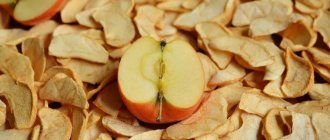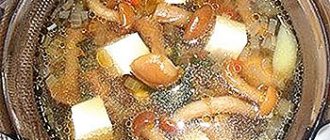How to store fresh figs
Ripe fresh figs are very tender. Therefore, it is preferable to consume berries in places of ripening, since fermentation quickly occurs after transportation.
If you want to preserve fresh fruits, it is better to use a refrigerator with a temperature set at approximately +1 °C. Under these conditions, figs are stored for approximately 2-3 weeks.
The laying of berries is carried out as follows:
- they are washed
- dried,
- put in containers, close,
- The containers are placed in the refrigerator on a shelf reserved for storing vegetables.
Fresh figs will last much longer when frozen. The suitable temperature for this is below -15 °C.
Important: room temperature is not suitable for preserving fresh figs. The berries will ferment in a day.
How to store dried figs
The shelf life of dry fruits is up to 6 months.
The duration of storage depends on the type of container and temperature values:
- The “Freshness” zone in refrigeration equipment with a temperature just above zero is the most comfortable place for figs placed in a package (container).
- Instead of a refrigerator, a basement room with a slightly above-zero temperature is also suitable. There are also conditions for preserving dried berries for two to three weeks.
The shelf life will be extended if you regularly open containers of dried fruits and check for any signs of spoilage or mold formation on the fruits.
Here is one of the methods for preserving fruits: you need to put them in a linen bag and put it in a glass vessel, tightly closed with a lid.
Be sure to read:
How to properly store dried apples at home?
An important condition for this is indoor humidity up to 80% at a temperature of -15 °C.
Preparation
For drying, use ripe fruits. The main sign of maturity (and therefore quality) is their independent falling from the tree.
Stages of fruit preparation:
- rinse thoroughly to remove dust,
- remove damaged areas,
- Place on cloth to absorb moisture.
To add sweetness to the dry product, figs are boiled with constant stirring with a wooden spatula (spoon) for 7-10 minutes in boiling syrup.
A sweet solution is prepared from three glasses of water and one glass of sugar. At the end of the time, place the cooked figs in a colander and dry each fig well. Now the berries are ready for drying.
Oven
Stages of drying figs in the oven:
- The prepared fruits are placed on the oven rack.
- The temperature is set to a minimum (not higher than +60 °C), and the door is kept ajar.
- The figs are turned over at intervals of 2 hours.
- Figs need to dry for 8 hours.
Important: Do not place the fig tree on a baking sheet. The air required for drying comes from all sides through the grille. It is better to put gauze on a lattice sheet with large holes.
Electric dryer
In such a unit, figs reach dryness much faster. They remain as juicy as freshly picked ones, and their color turns golden.
Drying procedure:
- The fruits are cut in half and placed on a clean cloth. It will absorb excess moisture from blanching.
- Halves of berries are evenly laid out on pallets of the drying device.
- Drying time for small fruits is up to 10 hours. Large specimens are best cut into two parts.
Sun drying
The figs are also washed and dried, and then laid out on a lattice sheet. It is installed so that warm air reaches the berries from all sides.
Traditional drying under the sun lasts 4-6 days. The berries are dried in the shade, strung on a strong thread.
Be sure to read:
How to properly store bananas at home so that they don’t turn black; can they be frozen?
If you first cut the figs into 2 parts and place them on a wire rack with the cut side up, this will speed up their drying.
Important: the sweet fig smell is a bait for insects. Therefore, fruits placed on a lattice sheet for drying must be covered with a layer of gauze.
Storage conditions
You need to start from the fact that ripe fruit is subject to rapid spoilage. Berries are quite capricious, so in order to preserve them, you should know a few secrets.
Ripe fruit
If the berries are not crushed during transportation, then they are placed in the refrigerator at a temperature of +1 - 3 degrees on the vegetable shelf. You should make sure that they lie at a short distance and do not touch. To eliminate extraneous odors, you can place them in a container or wrap them in wax paper. The berries are not stored for more than 4 days.
Unripe gifts of Pomona
They are most often found on store shelves and markets. It is impossible to rush them from Crimea or the Black Sea coast in any other form. In this case, you need to cum, should they still lie down or are they planned to be sucked as soon as possible. In the first option, it is immediately placed in the refrigerator. About eating, just leave it in a dark, cool place for 3 - 4 days, after which it will gain sweetness and become soft.
Important:
Dried figs have a huge concentration of sugar and nutrients.
The shelf life reaches 6 months without loss of quality if you place the berries first in a linen bag, and after some time in a closed container and put them in the refrigerator. Stocks should be inspected regularly for signs of mold.
Do you use expired food for cooking at home?
Yes, the main thing is to process it if it is meat or expired kefir for pancakes.
27.12%
No, it is very dangerous and not useful.
37.57%
If the products have fungus or mold, then we throw them away; if they are a couple of days past their expiration date, we use them for food, even without heat or other treatment.
35.31%
Voted: 1637
Freezing
Figs tolerate storage well at low temperatures. It remains in this form for up to 12 months. The requirement is not to re-freeze the rod. To preserve nutrients, quick deep freezing to -30 degrees and storage in sealed containers or bags is recommended.
How else can you prepare?
The fig can be pickled, compote, jam and juice can be made from it.
Pickled figs
Pickled figs are popular in fig harvest areas.
To prepare it you will need:
- 250 g of dried berries and port wine,
- 65 g balsamic vinegar,
- 1 tsp each orange and lemon peels,
- 1 tbsp. l. Sahara,
- 125 g crushed nuts,
- salt, pepper powder - optional.
Figs are marinated like this:
- The dried product is placed in a jar, port wine is poured in, grated zest is added and placed in the refrigerator for 24 hours.
- After which the liquid is poured into a pan, the remaining ingredients are added and the vessel is placed on the stove.
- After boiling, add the fig tree to the dressing and cook for 30 minutes over low heat (do not cover with a lid).
- The cooled contents are transferred to a clean jar and stored in the refrigerator.
Fig compote for future use
This homemade preserve is easy to prepare. Both fresh and dried figs are suitable for this.
For a three-liter jar you need:
- 300 g figs,
- 150 g sugar.
2.5 liters of water should boil in a bowl, pour the ingredients into it and cook for 10 minutes. Remove the compote from the heat, pour into a prepared glass jar and seal with a lid.
Be sure to read:
Everything about storing pears for the winter: what varieties, when to collect, where to store
Insulate the inverted jar of compote with a blanket. A cooled container with fig contents can be stored not in the refrigerator - the compote will not spoil until the next harvest.
Important: you don’t need to add more sugar - the fig tree is already sweet.
Green fig jam
Needed:
- 1 kg of berries and sugar,
- 300 g water,
- 5 g citric acid.
Preparation:
- The figs are poked with a fork and boiled in 2-3 waters for 5 minutes. Changing the water removes the bitterness and makes the berries softer.
- Then the figs are dipped in syrup made from 500 g of sugar and 300 g of water, and boiled for 15 minutes until the figs become limp.
- Then add 500 g of sugar, bring the contents of the pan to a boil, remove from heat, and place in a secluded place until the next day.
- The fruits soaked in syrup are finished cooking, not forgetting to pour citric acid dissolved in a small volume of water into the jam 3-4 minutes before the end of cooking.
Store jam in a cool and dark place.
Ripe fig jam
It can also be prepared without cooking, for which the figs are infused in boiled syrup. For 1 kg of fruit you need 700-750 g of granulated sugar, 2 tbsp. water. Ripe fruits, washed and dried, are used.
The first time the syrup is boiled for 7 minutes, pour it over the figs and cool. The drained sweet solution is brought to a boil, the heat is reduced, boiled for 5 minutes, combined with the berries a second time and allowed to cool.
And so on three more times. At the end of the third time, put the jam in a sterilized jar, close the lid and wrap it up. Store it in the refrigerator (cellar).
Fig juice
Only ripe figs are suitable. They are washed in cool water and allowed to drain. Then scald with boiling water and rub through a metal sieve.
Add cooled boiled water to the prepared mixture, maintaining a 2:1 ratio, and squeeze the mixture through several layers of gauze.
Health benefits and harms of dried figs
Figs are a storehouse of beneficial phytonutrients, antioxidants and vitamins. Dried fruits are a source of natural sugars and soluble fiber. They are rich in fiber, potassium, iron, magnesium, phosphorus, manganese, calcium, chlorine, sodium, vitamin B6 and K, retinol (vitamin A), thiamine (vitamin B1), riboflavin (vitamin B2). Consumption of figs is recommended for asthma, cough, bronchitis, sexual dysfunction, constipation, and gastrointestinal disorders.
Figs have a high glycemic index - 62, and fresh - 55. Therefore, eating dried fruits quickly increases blood sugar levels. Diabetic patients are not recommended to eat figs. But the high potassium content helps reduce blood sugar spikes.
Excellent source of iron and tryptophan
Hemoglobin is the most important protein in the human body. And to maintain it at a physiological level, iron is needed. Figs contain a large amount of this microelement, so their consumption stabilizes hemoglobin levels. This is especially important for children and adolescents, and during pregnancy in women. One dried fig provides approximately 2% of an adult’s daily requirement for this microelement.
Figs contain tryptophan, an amino acid that is involved in the synthesis of melatonin and vitamin B3. They are important for proper sleep and improving its quality.
Strengthening the immune system
- Figs stimulate and strengthen the immune system because... contains large amounts of potassium and magnesium.
- Weight control
- The fiber in figs helps in weight loss, but... It is high in calories, you need to eat several pieces a day.
- Lower blood pressure
One dried fig contains 2 mg of sodium and 129 mg of potassium. Therefore, it is ideal for protecting the body from hypertension and has a calming effect on the nervous system. Also, if there is a large amount of salt in the diet, potassium prevents increased loss of calcium in the urine.
Excellent source of calcium
Dried figs contain a lot of calcium - a building tool for the human skeletal system. Even milk is inferior to it in calcium content. Figs contain a large amount of phosphorus, which stimulates bone formation and is involved in their restoration in case of degradation or damage.
The benefits of dried figs for women
Figs normalize the estrogen content in a woman’s body, thereby reducing the risk of ovarian, breast, uterine cancer, and excess weight gain.
Cancer prevention
Figs are an excellent source of bioactive compounds such as fatty acids and phenols. These substances help reduce the risk of skin cancer. According to research, fig fruits are rich in proteolytic enzymes that inhibit the growth of cancer cells in the stomach.
The large amount of fiber in figs also has a positive effect not only on the general condition of the body, but also prevents the occurrence of breast, abdominal and rectal cancer. In addition to figs, you can also note the benefits of dried plums, dates, apples and pears.
Dried figs are rich in phytosterols, phenols, fatty acids and vitamin B6. These beneficial substances reduce the risk of developing coronary heart disease. Vitamin B6 is responsible for the production of serotonin, the happiness hormone that improves mood and lowers cholesterol levels.
Fig fruits improve blood circulation and reduce cholesterol levels!
We recommend: How to keep bell peppers fresh for the winter
Soluble fiber (pectin), which figs are rich in, stimulates intestinal motility. When moving through the gastrointestinal tract, these fibers work like a magnet and collect excess cholesterol, and then leave the body through the excretory system. This “cleaning” has a positive effect on the digestive system, reduces the likelihood of constipation and hemorrhoids, and normalizes the functioning of the gastrointestinal tract. Figs contain a large amount of seeds rich in mucin, which helps remove toxins, mucus and cleanse the colon.
Recipe for constipation: soak figs in water for about 12 hours, then consume morning and evening.
Benefits of dried figs for skin
Due to their high levels of micronutrients, figs help prevent and reduce many skin problems and diseases such as acne, pimples and even cysts. And the presence of a powerful antioxidant - vitamin C - improves skin color, reduces the number and depth of wrinkles.
Recipe: Grind 5 fresh or dried figs in a blender to a smooth paste. Add 1 teaspoon oat flour (or finely ground oats), 1 teaspoon milk and half a teaspoon ginger powder. Mix well until smooth. This mask can be used twice a week to make your skin soft and smooth.
Figs are useful for reducing skin pigmentation, including freckles. And also as a moisturizing, nourishing and rejuvenating product for the skin.
Recipe for a nourishing face mask: cut 1-2 small figs in half, remove the pulp and grind into a puree. Add a teaspoon of honey or yogurt and stir. Apply the finished mask to your face and leave for 5 minutes, then rinse with water.
Application and benefits of dried figs for hair
The condition of hair and scalp depends on nutrition. If there is a lack of minerals, vitamins and microelements in the diet, then this will certainly affect not only the appearance, but also the hair growth and the condition of the skin. There are many different cosmetic products, but often they do not give the desired results. Moreover, many of them are of artificial origin. In order to change the situation, first of all, you need to review your diet, and secondly, include dried figs in your diet as a source of beneficial minerals and nutrients that will help significantly improve the health of your hair. Magnesium, vitamin C, vitamin E in figs have a positive effect on blood circulation in the scalp and help accelerate hair growth.
Figs contain a substance called ficin, which has a beneficial effect on the walls of blood vessels, reduces blood clotting, promotes the resorption of blood clots, and makes it possible to treat thrombo-embolic and cardiovascular diseases.











